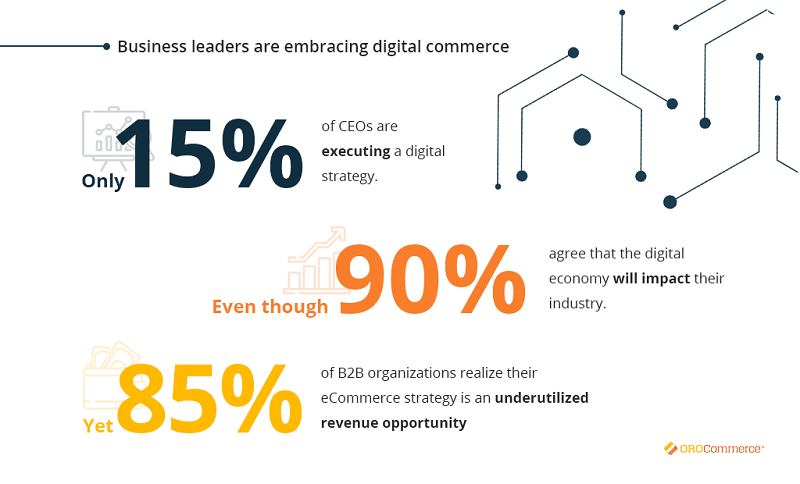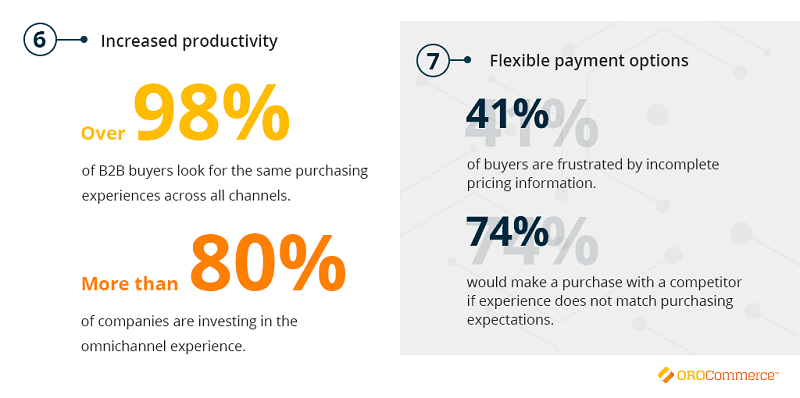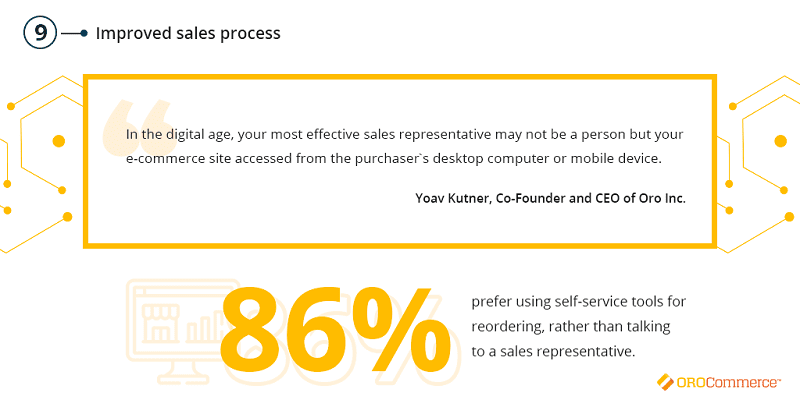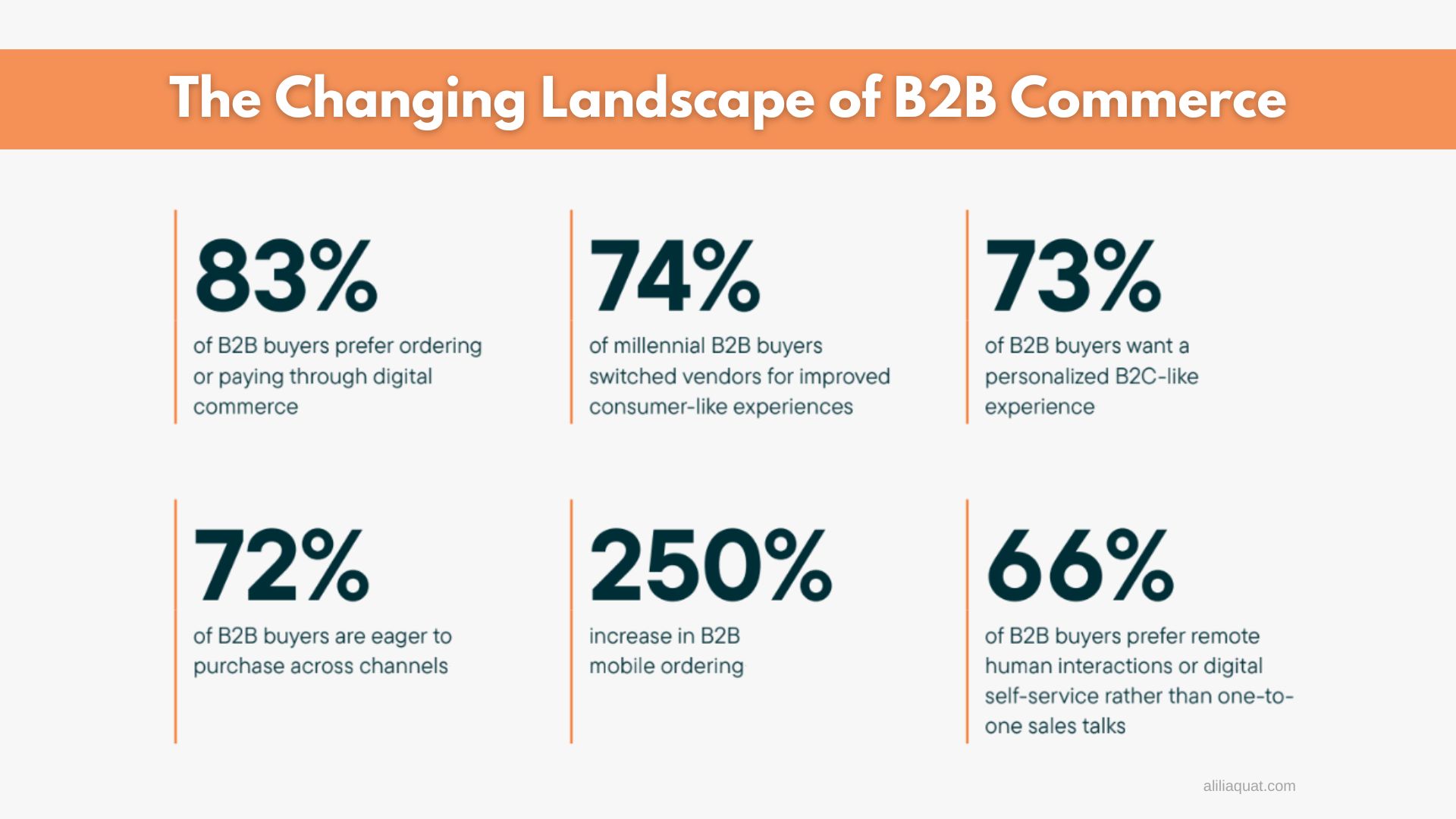The world of B2B commerce has been experiencing a significant shift in recent years, driven by evolving buyer expectations and rapid advancements in technology. This transformation has only been accelerated by the global pandemic, as traditional in-person interactions were replaced with digital alternatives such as video calls, online chats, and e-commerce.
As a result, today’s B2B buyers are demanding a purchasing experience that mirrors the seamless, personalized, and frictionless nature of their consumer experiences.
In this blog post, we will delve into the driving forces behind this shift, explore the key elements of a successful B2B commerce experience, and discuss how businesses can adapt to meet the ever-changing demands of modern buyers.
Table of Contents
The Changing Landscape of B2B Commerce
A significant factor in the changing landscape of B2B commerce is the increasing influence of digitally-native Generation Z and millennials in decision-making positions. As these generations rise within the workforce, their familiarity with digital technology and online experiences is reshaping the expectations of B2B buyers.

Moreover, B2B buyers are also consumers in their personal lives, exposed to sophisticated e-commerce experiences that raise the bar for what they expect in a professional setting. When purchasing items on behalf of their employers, these buyers now anticipate a similar level of frictionless, personalized service.
This shift in expectations is supported by compelling statistics, which paint a clear picture of the modern B2B buyer’s preferences:
83% of B2B buyers prefer ordering or paying through digital commerce.
Gartner
74% of millennial B2B buyers switched vendors for improved consumer-like experiences.
Pymnts
73% of B2B buyers want a personalized B2C-like experience.
Accenture
These numbers demonstrate the growing demand for a new approach to B2B commerce, one that prioritizes user experience and leverages digital channels to create seamless, engaging interactions.
Key Elements of a Successful B2B Commerce Experience
To meet the evolving demands of modern buyers, businesses must develop a B2B commerce experience that combines the best aspects of both B2C and B2B-specific features.
B2C-like experiences
B2B buyers are looking for engaging, user-friendly experiences that resemble those they encounter in the consumer world. Key elements of a successful B2C-like experience include:
- Easy-to-navigate product catalog: Simplify the browsing experience with clear categories and intuitive navigation.
- Search options: Help buyers find what they need quickly with advanced search functionality and filters.
- Inspirational content: Offer content that educates, informs, and inspires buyers to make informed decisions.
- Shopping lists: Allow buyers to create and save shopping lists for easy reordering and collaboration.
- Payment options: Provide a variety of payment methods, such as credit cards, invoices, and punchout, to cater to different customer preferences.
- Personalized functions: Offer tailored recommendations based on buyer behavior and preferences to enhance the shopping experience.
- Fast loading and high-performing digital storefronts: Ensure your website performs well on all devices to minimize frustration and bounce rates.

B2B-specific features
While incorporating B2C-like experiences is essential, it’s also crucial to include B2B-specific features that address the unique needs of businesses. Key elements include:
- Reordering and order schedule: Make it easy for buyers to reorder items and schedule deliveries to manage inventory effectively.
- Tailoring features to customer needs and challenges: Communicate with your customers to understand their pain points and incorporate features that address those challenges.
By combining the best of both worlds, businesses can create a B2B commerce experience that meets the high expectations of modern buyers while addressing the unique needs of the B2B market.

Suggested: 12 B2B Marketing Trends for the AI-Powered Future
Case Study: Mars, Inc. – Building a B2B Customer-centric Commerce Experience
Mars, Inc., a global company best known for brands like M&Ms, Skittles, and Snickers, offers a wide array of products to consumers and businesses alike. In this case study, we’ll explore how Mars addressed the challenges of the evolving B2B landscape by building a customer-centric commerce experience.
Background on Mars, Inc. and its B2B sales challenges
In their B2B sales division, Mars faced frequent customer complaints about the ordering process for their ice cream unit. Buyers found the process cumbersome, which led Mars to reconsider its digital sales journey to better meet customer expectations.
The digital sales journey overhaul
In response to customer feedback, the Mars team set out to create a prototype of a new digital sales experience. They aimed to deliver what customers asked for an easy-to-use platform that combined B2C-like experiences with essential B2B-specific features. Key improvements included:
- Easy-to-use information about products, pricing, and order status: Streamlined access to crucial information, making the ordering process more efficient.
- B2C-like experience: Incorporated elements like intuitive navigation, engaging content, and personalized recommendations to enhance the user experience.
- B2B-specific features: Added requisition lists, easy reordering, the ability to ship to multiple warehouses, and scheduled orders to address the unique needs of B2B buyers.
Successful implementation of the prototype
Remarkably, the Mars team managed to create and implement the prototype in just 90 days. This overhaul demonstrates the importance of listening to customer feedback, adapting to changing expectations and incorporating a mix of B2C-like experiences and B2B-specific features to create a successful B2B commerce experience. By doing so, Mars was able to transform their digital sales journey and better serve the needs of their customers.
Adapting to the New B2B Landscape: Strategies for Success
To stay competitive in the rapidly changing B2B landscape, businesses must adapt their strategies and embrace new approaches to meeting customer expectations. Here are some key strategies for success:
Understand and address evolving buyer expectations
Businesses need to stay in tune with their customer’s needs and preferences, regularly gathering feedback and monitoring trends to ensure they are meeting expectations. This may involve conducting surveys, hosting customer focus groups, or analyzing data to gain insights into buyer behavior.
Embrace ongoing innovation and continuous improvement
In a fast-paced digital world, businesses cannot afford to rest on their laurels. Embracing innovation and continuously improving the customer experience is essential for long-term success. This may involve implementing new technologies, refining processes, or exploring new ways to engage and delight customers.
Leverage data and analytics
Harness the power of data and analytics to better understand customer behavior and preferences, allowing for more informed decision-making and targeted improvements to the customer experience.
Collaborate across teams and departments
Successful B2B commerce requires a collaborative approach, with sales, marketing, IT, and other departments working together to create a seamless and engaging customer experience. Foster a culture of collaboration and open communication to ensure all teams are aligned and working towards common goals.
By adopting these strategies, businesses can adapt to the new B2B landscape and create a commerce experience that not only meets but exceeds the expectations of modern buyers.

Also read: B2B Marketing Funnel – 5 Stages, Examples, and Template
Conclusion
In conclusion, the B2B commerce landscape has evolved significantly in recent years, driven by changing buyer expectations and the rapid adoption of digital technologies. Businesses must adapt to this new landscape by embracing a customer-centric approach that combines the best of B2C-like experiences with essential B2B-specific features.
By understanding and addressing the evolving expectations of modern buyers, embracing ongoing innovation, and fostering a culture of collaboration, businesses can successfully navigate the changing B2B landscape and create engaging, seamless, and personalized experiences for their customers.
Now is the time for businesses to embrace digital transformation and adapt to the new B2B buyer expectations. The companies that can do so effectively will not only survive but thrive in the increasingly competitive world of B2B commerce.

Ali is a digital marketing blogger and author who uses the power of words to inspire and impact others. He has written for leading publications like Business2Community, Inc. Magazine, and Marketing Profs. When not writing, he enjoys spending time with his family.
